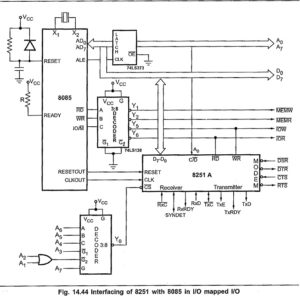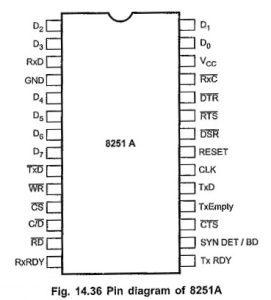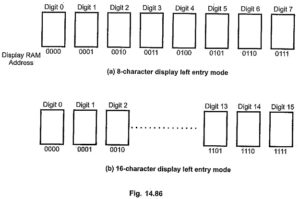Features of 8255 Microprocessor:
Features of 8255 Microprocessor – Here we see programmable peripheral interface (PPI), 8255, designed by Intel. It is a general purpose programmable I/O device used for parallel data transfer. It has 24 I/O pins which can be grouped in three 8-bit parallel ports : Port A, Port B and Port C. The eight bits of port C can be used as individual bits or be grouped in two 4-bit ports : Cupper (CU) and Clower (CL).
The 8255, primarily, can be programmed in two basic modes : Bit Set/Reset (BSR) mode and I/O mode. The BSR mode is used to set or reset the bits in port C.
The I/O mode is further divided into three modes :
Mode 0 : Simple Input/Output
Mode 1 : Input/Output with handshake
Mode 2 : Bi-directional I/O data transfer
The function of I/O pins (input or output) and modes of operation of I/O ports can be programmed by writing proper control word in the control word register. Each bit in the control word has a specific meaning and the status of these bits decides the function and operating mode of the I/O ports.
The Features of 8255 Microprocessor are namely,
1. The 8255A is a widely used, programmable, parallel I/O device.
2. It can be programmed to transfer data under various conditions, from simple I/O to interrupt I/O.
3. It is compatible with all Intel and most other microprocessors.
4. It is completely TTL compatible.
5. It has three 8-bit ports : Port A, Port B, and Port C, which are arranged in two groups of 12 pins. Each port has an unique address, and data can be read from or written to a port. In addition to the address assigned to the three ports, another address is assigned to the control register into which control words are written for programming the 8255 to operate in various modes.
6. Its bit set/reset mode allows setting and resetting of individual bits of Port C.
7. The 8255 can operate in 3 I/O modes : (i) Mode 0, (ii) Mode 1, & (iii) Mode 2.
a) In Mode 0, Port A and Port B can be configured as simple 8-bit input or output ports without handshaking. The two halves of Port C can be programmed separately as 4-bit input or output ports.
b) In Mode 1, two groups each of 12 pins are formed. Group A consists of Port A and the upper half of Port C while Group B consists of Port B and the lower half of Port C. Ports A and B can be programmed as 8-bit Input or Output ports with three lines of Port C in each group used for handshaking.
8. In Mode 2, only Port A can be used as a bidirectional port. The handshaking signals are provided on five lines of Port C (PC3 – PC7 ). Port B can be used in Mode 0 or in Mode 1.
8. All I/O pins of 8255 has 2.5 mA DC driving capacity (i.e. sourcing current of 2.5 mA).





